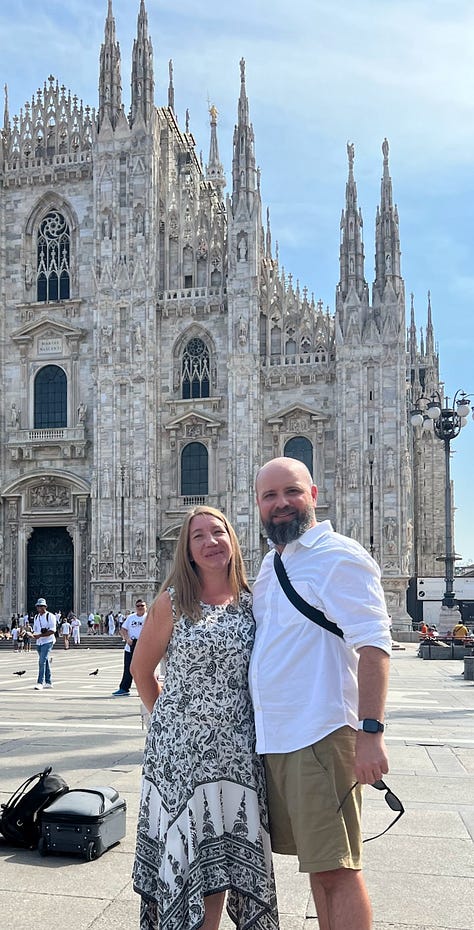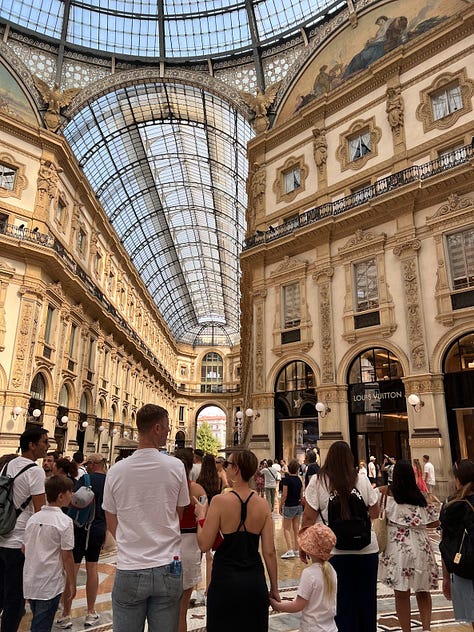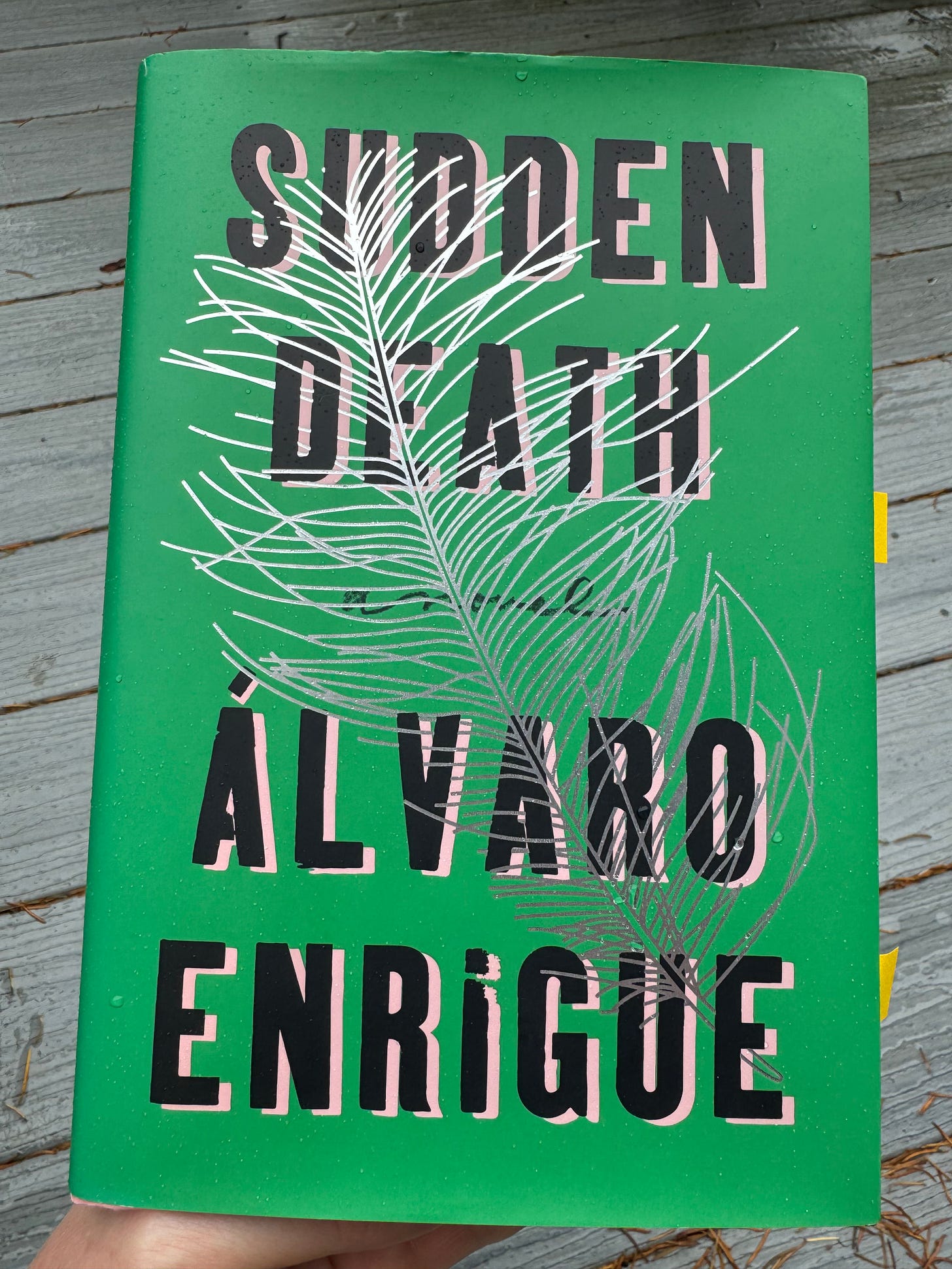A book I don't recommend, a city I didn't like, and a lesson I won't use again
Welcome to my least helpful newsletter ever
A book to read if you are smarter than me: SUDDEN DEATH by Álvaro Enrigue, translated by Natasha Wimmer
I’m not smart enough to read SUDDEN DEATH.
I looked at every word, but does that mean that I “read” it? Because I didn’t get it.
This book contains:
A tennis ball made from Anne Boleyn’s hair, crafted by Jean Rombaud, her executioner
An imagining of how a film would capture an interaction between Pius IV and Cardinal Montalto. The bishop of Milan has “small tics that make him look like a piece of unedited footage”
Several chapters, interspersed throughout the book, about a sixteenth century tennis match
Emails from the author’s editor, telling him to send proofs back, pronto
The burning of indigenous codices in Mexico
The Council of Trent
Hernán Cortés and his *ahem* escapades with Maliche
The pronunciation, translation, and evolution of the name “Maliche”
The patron saint of gay culture
A description of Caravaggio painting the first “still life” ever painted by an Italian artist
Exactly one sentence after going on about Thomas More’s Utopia, the author (with zero segue) begins musing about what this book is about. Much like me, he can’t figure it out either. After a page of rambling the author finally writes: “I know that as I wrote it I was angry because the bad guys always win. Maybe all books are written simply because in every game the bad guys have the advantage and that is too much to bear.” I flagged that line on November 3rd and boy does it hit different as I’m writing this now, on November 6th.
I think have a slightly above average understanding about the Counter-Reformation, sixteenth century Europe, and Cortés’s conquests. (My knowledge on tennis and Renaissance artists is, admittedly, rather lacking). Still, I feel like I missed every single historical reference in this book.
Also, the author apparently researched every detail and then threw in a bunch of random fictional stuff. Totally acceptable, since SUDDEN DEATH a novel, but I found myself constantly googling whether or not something was true or not (Anne Boleyn’s hair = never made into a tennis ball).
It’s probably a good book if you are smarter than me.
A city to explore if you are more cultured than me: Milan
Naturally, parts of Álvaro Enrigue’s book are set in Milan. Just like I’m not smart enough to appreciate SUDDEN DEATH, I’m also not smart enough to appreciate Milan.
My children are DEFINITELY not smart or cultured enough to appreciate Milan.
My family and I arrived in the northern Italian city in August of 2023 after nearly a month in Europe. Milan was the cheapest city to fly out from, so that’s where we ended our travels.
We arrived via train from Lugano on one of the hottest days of the year. Oddly and thankfully, the hotel/apartment I’d booked months earlier had air conditioning AND a television.
The kids, who’d experienced zero screens or fake air for the past month, flopped on the couch and reported that they’d be just fine right there for the next three days until we flew home, thank you very much. They were willing to venture out for food at the Mercato Centrale Milano, a food market under the fancy train station, but that was about it.
Undeterred, I dragged the family to Casa Museo Boschi Di Stefano, a second-floor apartment-turned-museum where an Italian couple who amassed a large collection of 20th-century Italian art used to live. It was free to visit and close to our hotel. We also hopped on the Metro to see the Duomo and walked among tourist hordes at Galleria Vittorio Emanuele II shopping center.



It was a pretty miserable, to be honest.
Again, 100 degrees.
I left everyone at the hotel the next day and headed back out to climb the Duomo steps, visit the canals, and run a few miles through the city on my own. All day rain poured down and hot steam rose up around me



Usually, I love exploring places on my own, but I still didn’t fall for Milan. Perhaps, if I was the kind of person that could recognize a Caravaggio or loved avant-garde fashion, I would have appreciated Milan instead of wishing that we’d simply stayed in Switzerland longer.
A lesson to teach and another lesson not to teach: Humanism, Art, and Religion
Despite not knowing about Italian still-life painters, one of my favorite lessons to teach is about art and humanism. This is the one to teach.
I remember getting the bones of this lesson from the good folks at the Allentown Art Museum. The lesson is no longer on their website.
The day before this lesson, I teach my students about how the Middle Ages in Europe were the “Dark Ages” (yes, yes, I’m simplifying. I know). The next several lessons are about the Renaissance and then the Enlightenment. This lesson here is a bridge between the two time periods.

A lecture is involved. Brace yourself. Here are the Google slides and here is the student worksheet for students to take notes.
First, tell your students that at the end of the class, they’ll get copies of four paintings and they’ll be tasked with ordering them in a timeline showing when they were likely created. Students will doubt their ability to do this, not being art historians and all.
Then, teach students about halos, the hieratic scale, landscape, and perspective. Each concept has a Google slide with a definition, examples, and information on how those aspects of art looked during the Middle Ages compared to the Renaissance. Explaining the concepts while students take notes and look at examples takes about 20 minutes.
Before class, print the last four slides. In color! Yes, I know how hard it is to convince your school that you really do need color copies. Good luck with that. Also, cut the dates off the copies. I print one copy for each table group.
After the lecture, give students the pictures and tell them to put them in timeline order. There is space for students to record the order on the back of their notes.
Students will automatically use the words “halo,” “hieratic scale,” “landscape,” and “perspective” as they order the pictures. If your admin wants to hear students using content-specific vocabulary, this is the lesson for you. And, students will be amazed at their ability to easily and confidently order the paintings.
Wham, bam! You’ve taught your students about humanism. Good work!
In the days that follow this lesson, students learn about the Protestant Reformation, the printing press, the Scientific Revolution, and then (finally), the Enlightenment. I once showed my students Rick Steves’ Luther and the Reformation because I love Rick Steves and all his European travel montages and I probably needed a break from talking.
I don’t know if I’d really recommend it for the classroom - it’s (obviously) very religious and there are also a few shots of European male statues with their goods hanging out. But if you are willing to risk all that, here are the student questions I wrote up for the documentary.
Alternatively, you can watch this documentary before reading SUDDEN DEATH in case you want to be able to understand a few of the esoteric references to the Council of Trent or whatever.
Happy traveling, reading, teaching, and admiring art…or not.
See y’all next Sunday
If you purchase books via the links in this newsletter, know that you are financially supporting me, the authors, and your local independent book store. Thank you!




I think I hate most places when it's above 100 degrees haha
This is great - even if it was bad :)